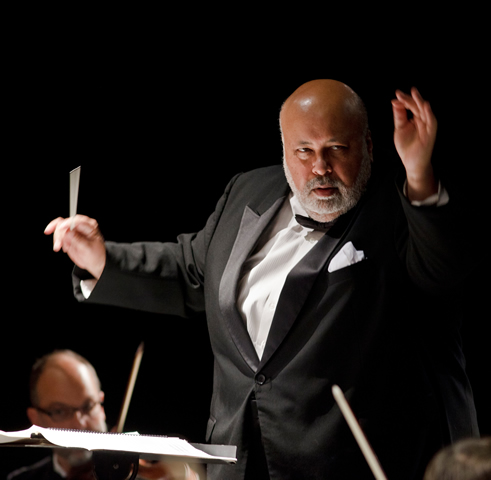The North Carolina Symphony, led by resident conductor William Henry Curry, brought a feast of color to Wilmington with a program consisting entirely of works by Russian composers.
The opulent sonorities of Nikolai Rimsky-Korsakov began the evening, in his Capriccio espagnol. Rimsky is renowned for the richness of his orchestration and this work is a showpiece in sound. The first movement illustrated that immediately, but also lacked some of the bracing quality it needs. This was due to a somewhat slow tempo and perhaps the need for more energetic articulation. The second section brought real beauty from what could be a humdrum low string accompaniment at the beginning. The horn sound was lush and tender, and was followed by lovely wind solos and sensitive sound from the muted brass. The climax soared beautifully. The third section, related in character to the first, again felt rather too leisurely. The sometimes riotous last movement bathed listeners in a wash of color if not necessarily as much flair as it could have had.
The program then turned to the unusual, with the concerto in F-Sharp minor for Bass and Orchestra by Serge Koussevitzky. Known as an eminent and important conductor, Koussevitzky was also a superb bass player with special ability to project in the high range of his instrument.* The soloist here was Leonid Finkelshteyn, the principal bass of the North Carolina Symphony and a distinguished performer and teacher. Koussevitzky’s concerto, premiered in 1905, is a work thoroughly in the romantic style. Though not a major piece, it shows a definite melodic gift and extensive exploration of the possibilities of an instrument not typically associated with soloistic exploits. Finkelshteyn was excellent. His fine long melodic lines were a distinguishing quality. He was virtuosic as well, especially in the third movement cadenza, which also showed expressive tonal gradation through the technical demands. A particularly lovely spot, from both soloist and orchestra, was the reflective ending of the second movement.
After intermission came the most substantial work on the program, the fine Symphony No. 2 in B minor by Alexander Borodin. The craggy, oft-recurring main idea of the first movement was played for the most part with energetic sharp rhythm. The second movement again needed to be quicker and more fleet, though the lyrical section had good atmosphere. The third movement was the standout. This bewitching music was played beautifully, with gorgeous horn and clarinet solos, and lush long string lines. The ending was magical. The last movement brought the best energy of the concert to that point, with bracing power at the peak and a bright, brilliant ending.
With the orchestra seeming to finally hit its full stride in projecting energy, the program ended with suitable bombast, in the “Marche slave” by Piotr Ilyich Tchaikovsky. This warhorse began with an excellent sustained gloomy feeling. There were good sharp rhythms, an effective buildup, and a particularly well-drawn fade-out to the final march and the patriotic effusion of the Russian national anthem. All the brightness and outpouring of sound that might have been desired at earlier spots in the program, came together here for a rousing conclusion.
This concert will be repeated without the Tchaikovsky at noon on February 7 in Raleigh’s Meymandi Concert Hall; the full program will be heard again on the 8th in UNC’s Memorial Hall in Chapel Hill.
*Koussevitzky’s double-bass recordings have been reissued several times, most recently on a Biddulph CD (WHL 019) that is, alas, out of print. Copies turn up occasionally from Amazon and eBay. The second movement from the concerto (with piano accompaniment), played by the composer, may be heard on YouTube here.











